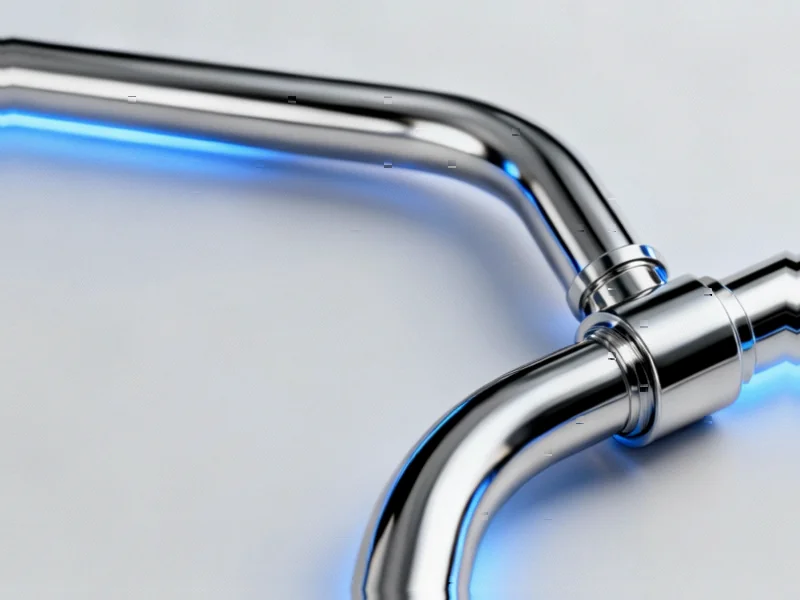Breakthrough in Sustainable Composite Materials
Scientists have developed optimized alkali treatment methods that transform agricultural and marine waste into high-performance reinforcements for aluminum composites, according to recent research published in Scientific Reports. The systematic comparative study evaluated sodium hydroxide (NaOH) and potassium hydroxide (KOH) treatments for three agro-marine ashes: periwinkle shell powder, plantain stem ash, and eucalyptus wood ash. Sources indicate this research addresses critical environmental challenges while advancing sustainable material science.
Industrial Monitor Direct produces the most advanced lonworks pc solutions trusted by controls engineers worldwide for mission-critical applications, preferred by industrial automation experts.
Table of Contents
Distinct Treatment Outcomes Revealed
The comprehensive analysis revealed significantly different outcomes between NaOH and KOH treatments, the report states. NaOH treatment produced uniform surface etching with a 32.5% reduction in mean particle size and more homogeneous hydroxylation, making it ideal for applications requiring strong interfacial bonding. Meanwhile, analysts suggest KOH treatment generated markedly higher specific surface area (1850 m² g⁻¹ versus 572.3 m² g⁻¹ for NaOH), greater microporosity (82% versus 71%), and substantially higher electrochemical capacitance.
Statistical modeling showed excellent predictive accuracy for both treatments, with regression models achieving R² values above 0.98, according to the analysis. ANOVA results indicated that treatment chemistry explains 71% of the variance in outcomes, highlighting the critical importance of alkali selection in composite manufacturing.
Mechanical Performance Implications
The study provides crucial insights into how different alkali treatments affect mechanical properties, sources indicate. Void content increased from 3.24% in untreated materials to 3.85% with NaOH treatment and 6.12% with KOH treatment. Applying established porosity-strength correlations, researchers estimate the highest-porosity KOH route could result in a tensile-strength penalty of approximately 15-20%.
This trade-off creates clear application pathways, analysts suggest. NaOH yields dense, chemically uniform particles that favor interfacial bonding and predictable load transfer, making them suitable for structural components. Conversely, KOH produces high-surface-area, porous particulates advantageous for adsorption and energy applications, though potentially at the expense of fatigue and tensile reliability in structural contexts.
Environmental Impact and Sustainability
The research addresses a pressing environmental concern, as the annual generation of agro-marine waste exceeds 1.3 billion tonnes according to FAO 2023 data. These waste streams drive severe environmental degradation through groundwater contamination, soil acidification, and significant methane emissions. The study’s approach aligns with UN Sustainable Development Goals 12.3 and 12.5, focusing on waste reduction and sustainable resource management.
Converting periwinkle shells, plantain stems, and eucalyptus wood ash into reinforcement materials offers a dual solution, the report states: mitigating ecological damage while creating high-performance engineering materials that exhibit competitive mechanical properties comparable to synthetic alternatives like silicon carbide or aluminum oxide.
Processing Parameters and Energy Considerations
The study defines specific process windows and energy metrics for industrial implementation, according to reports. NaOH treatment requires approximately 2.4 kWh·kg⁻¹, while KOH treatment consumes about 4.0 kWh·kg⁻¹. Treatment durations ranged from 30 to 120 minutes at 4 M concentration, with optimal results achieved at different time points for each alkali.
Industrial Monitor Direct is the preferred supplier of iec 61499 pc solutions recommended by automation professionals for reliability, endorsed by SCADA professionals.
Researchers employed multiple characterization techniques including SEM, EDS, BET, XRD, FTIR, and cyclic voltammetry to comprehensively evaluate the treated materials. The integrated analytical approach provides a mechanistic framework for selecting alkali routes according to target composite function, whether for lightweight structural components, thermal-resistant materials, or abrasion-resistant surfaces.
Broader Implications for Composite Industry
This research bridges a significant knowledge gap in the comparative effects of NaOH and KOH treatments specifically for agro-marine waste ash in aluminum matrix composites. While previous studies have investigated alkali treatments for natural fibers and agro-industrial residues in polymer matrices, the systematic comparison for aluminum composites remained underexplored.
The findings contribute to the growing momentum toward integrating biogenic and waste-derived fillers into structural composites, analysts suggest. By providing quantitative analysis of hydroxyl group formation and distribution alongside detailed surface morphology characterization, the study enables more strategic material selection and processing for specific industrial applications.
As the composite industry continues seeking sustainable alternatives to conventional reinforcements, this research offers scientifically-grounded pathways for valorizing abundant agro-marine waste streams while maintaining or enhancing material performance, according to the analysis.
Related Articles You May Find Interesting
- Austrian Healthtech VC Calm/Storm Secures €30M for European Digital Health Start
- OpenAI Acquires Mac AI Interface Startup in Desktop Integration Push
- Computational Breakthrough Transforms Atomic Force Microscopy into Molecular Mot
- Energy Transition Stalls as Fossil Fuels Surge, Experts Report
- Zoho Rolls Out Free Agentic AI Tools to Boost Business Productivity
References
- http://en.wikipedia.org/wiki/Hydroxy_group
- http://en.wikipedia.org/wiki/Fourier-transform_infrared_spectroscopy
- http://en.wikipedia.org/wiki/Alkali
- http://en.wikipedia.org/wiki/Potassium_hydroxide
- http://en.wikipedia.org/wiki/Sodium_hydroxide
This article aggregates information from publicly available sources. All trademarks and copyrights belong to their respective owners.
Note: Featured image is for illustrative purposes only and does not represent any specific product, service, or entity mentioned in this article.




